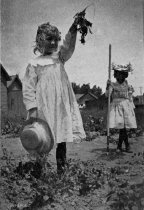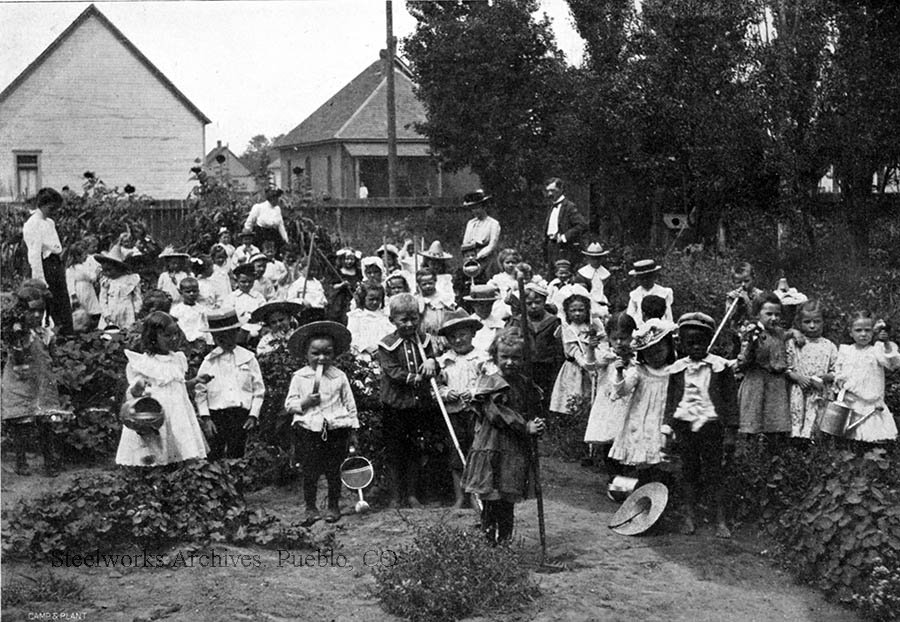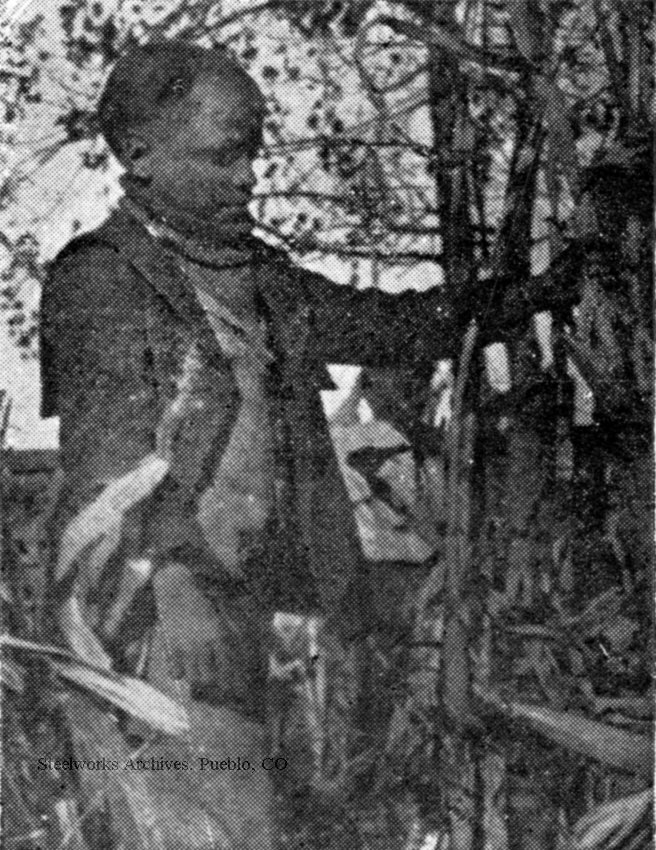
Story
Colorado Is My Classroom, Part II
Outdoor Schools in Pueblo in the Early Twentieth Century
After we ran an article in August exploring the history of outdoor classrooms in Colorado and around the country, the Steelworks Center of the West brought to our attention another experiment in outdoor education that took place in Colorado. We’re pleased to share their story in The Colorado Magazine.
With schools in Pueblo preparing to return, we thought it would be appropriate to post about the gardening educational curriculum in the CF&I company schools in the early part of the 20th century.
In a movement led by Johann Heinrich Pestalozzi, nineteenth-century educators believed that children as young as age four or five learn best through experiences involving physical activity and concrete experiences with objects, not solely by studying the world by reading books. By the fall of 1899, the philosophy had morphed into giving young people responsibility combined with a basic education in the planting, nurturing, and cultivating of fruits, vegetables, and flowers.

Children of the Bessemer summer kindergarten at Minnequa Works (Pueblo) working in their garden, 1902
This new understanding of the world, educators believed, would mold them into learned, capable, and productive adults. In addition, fresh air and sunlight received from “nature studies” would enhance the growth of their bodies as well as their minds.
Supporters of what we consider to be “welfare capitalism,” CF&I administration made many services available to their employees in the early 20th century. These extra services extended beyond just a job but included a home, medical care, recreational opportunities, and education for the employees and their families. The kindergarten program developed by CF&I, one of the first of its kind in the United States, was fully under the direction of the company-sponsored Sociological Department.
With such widespread popularity, a gardening curriculum was instituted the spring of 1900 in three of CF&I’s company schools in Pueblo: Wildeboor School (formerly located in today’s Grove neighborhood on C Street between Park and Palm), Bessemer School (1125 East Routt), and Corona School (formerly located near Corona Park on west Abriendo Avenue.) Minnequa Elementary School (1708 East Orman) kindergarteners planted gardens after the school opened in 1903.
Dr. Richard Corwin, director of CF&I’s Sociological Department, which oversaw the company-sponsored kindergartens, instituted a curriculum in which the “work” was in the form of directed play and of schoolwork based upon gardens planted and worked by the children. Operating on an altered schedule from April until December, children would plant seeds and bulbs in the spring, study and maintain the crops during the summer, and harvest in the fall.

"Oh, look at my radishes!" A Kindergarten student demonstrates gardening success, 1902.
The writers of Camp and Plant, the company newsletter, noted that the gardens "form an important and most successful part of the summer kindergarten system." The students' schedule ran on two different classes, one for the youngest students from 9 a.m. until 11 a.m., the other from 1:30-3 p.m. for older students.
The first hour of each session was devoted to garden work, the rest to general kindergarten academics such as music, drawing, cutting and folding, and domestic skills such as sewing and weaving. Crops harvested by each kindergarten class included radishes, lettuce, beets, turnips, carrots, squashes, and pumpkins.
The gardens were not solely a company effort. Camp and Plant noted that owners of property adjoining each school gave the use of their land rent-free and the Pueblo Water Company furnished all water for irrigating at no charge.

Kinderg
The school district provided each school with watering cans, hoes, rakes and shovels. In the more remote mining camps, only those camps with ample water supply to irrigate the crops included gardening in their school curriculum. Income from selling fruit and vegetables to the parents of the children was put back into school and gardening operations for the next growing season.
Tried as they might, the costs of maintaining kindergarten gardens and this and other Sociological Department activities soon became overwhelming for the company. The gardens were discontinued around 1908 when the company experienced severe economic strains.
Limited social programs once administered by the Sociological Department crept along until 1915 when they were managed by the YMCA as part of the company instituted Employee Representation Plan.
The Steelworks Center of the West provides continuing education to the public through the preservation of historic archives, artifacts, and buildings of the Colorado Fuel and Iron Company (CF&I), and related activities leading to the industrialization of the Western United States. For more information, visit www.steelworks.us.
More from The Colorado Magazine
Colorado Is My Classroom More than a century ago, open-air classrooms had a moment in response to another pandemic. Then it was tuberculosis, another era-defining airborne pathogen that attacked the respiratory system. And the results were encouraging. Could fresh air be part of the solution to school in the time of coronavirus?
Were They Mexicans or Coloradans? Constructing Race and Identity at the Colorado–New Mexico Border Emerging Historians Award
Health, Recreation, Education, and Uplift: Lincoln Hills and Black Recreation in the Colorado Mountains When temperatures soared in cramped, noisy cities, Colorado’s higher elevations promised chilly nights and mild days spent fishing, camping, and hiking under shady pine trees. Unlike their white counterparts, however, African Americans could not head just anywhere in the mountains. Not far outside of Denver, Lincoln Hills, a vacation community developed for Black people, represented both an escape from the city and an escape from segregation.

